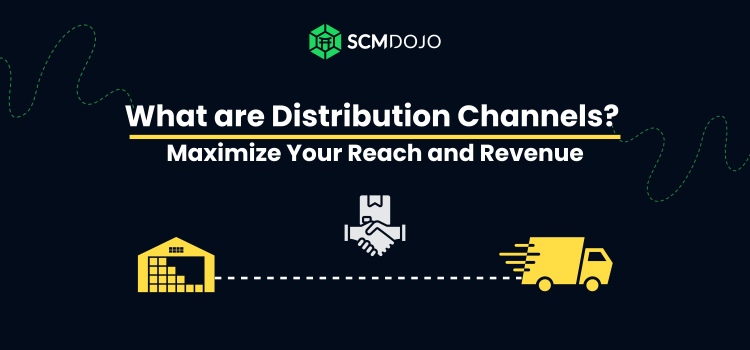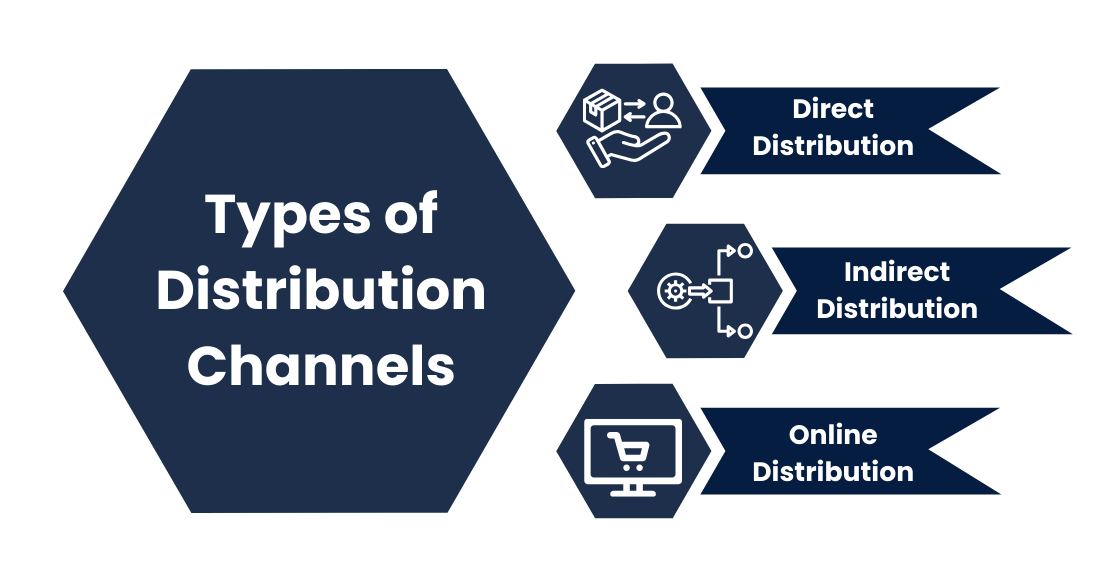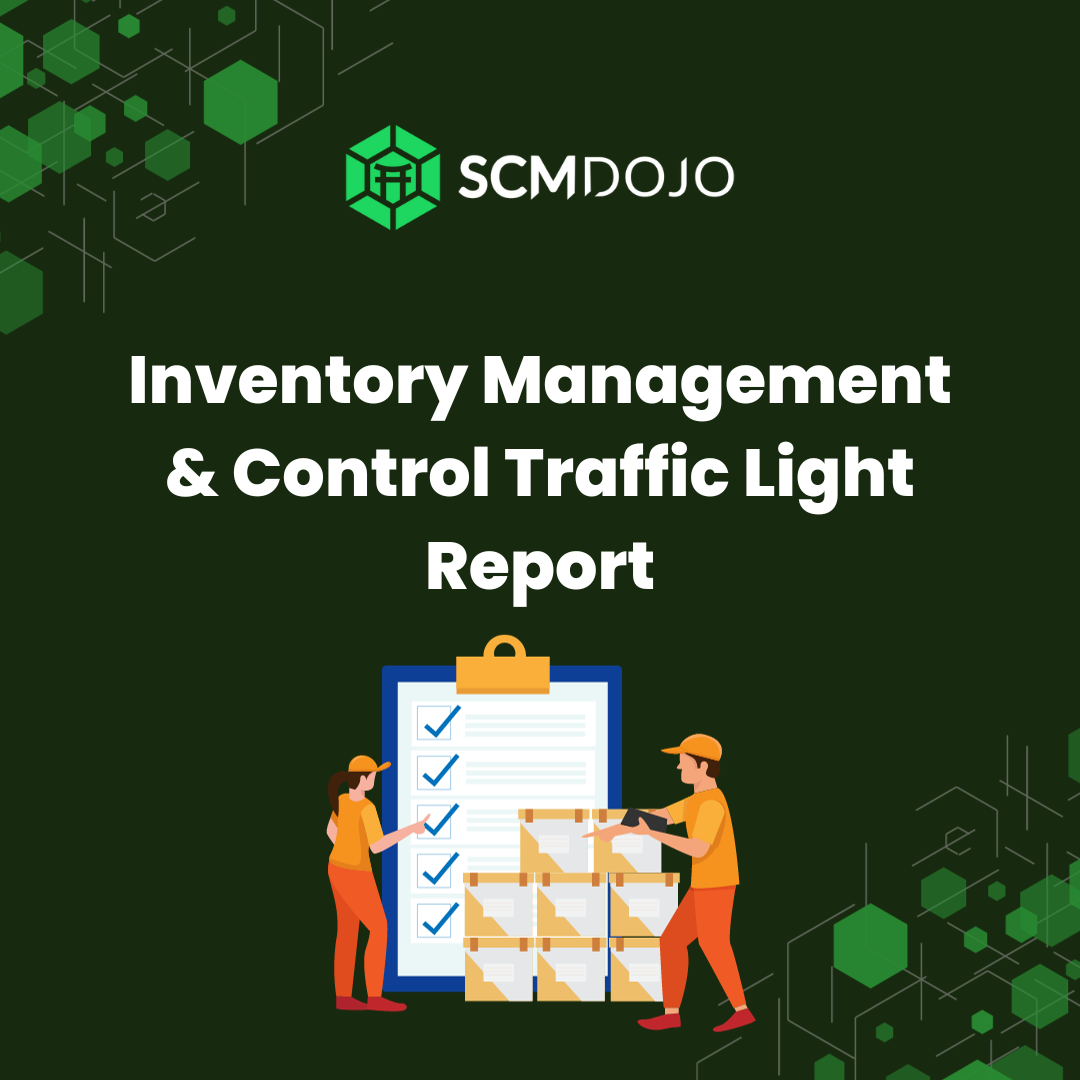Are you struggling to reach your target audience and maximize your revenue? It’s time to unlock the power of distribution channels. Distribution channels are the key to expanding your reach and boosting your bottom line. By effectively leveraging these channels, you can tap into new markets, connect with potential customers, and accelerate your growth.
In today’s fast-paced digital world, there are countless distribution channels available, from social media platforms to online marketplaces. But it’s not just about being present on these channels; it’s about understanding how to make them work for you. This is where strategic planning and optimization come into play.
In this article, we will delve into the strategies and tactics you need to employ to maximize your reach and revenue through these channels. From selecting the right channels for your brand to optimizing your content for each platform, we will guide you through the process step by step. Get ready to unlock the power of distribution channels and watch your business soar to new heights.
What are Distribution Channels?
Distribution channels are the pathways through which products or services reach the end consumer. They can be physical or virtual, and they play a crucial role in getting your offerings to the right people at the right time. These channels act as intermediaries, connecting manufacturers or service providers with consumers.
Importance of Distribution Channels in Business
Distribution channels are vital for businesses as they enable them to reach a wider audience and generate higher revenue. Without effective distribution channels, your products or services may remain limited to a local market, hindering your growth potential. By leveraging these channels, you can expand geographically, increase brand visibility, and target new customer segments.
Download Free Modern Warehousing & DIstribution Centers Cheat Sheet PDF
Types of Distribution Channels
There are several types of distribution channels, each with its characteristics and advantages. Let’s explore some of the most common types:
1. Direct Distribution:
In direct distribution, the manufacturer sells products directly to the end consumer without involving any intermediaries. This can be done through physical stores, e-commerce websites, or even direct sales representatives.
2. Indirect Distribution:
Indirect distribution involves the use of intermediaries to reach the end consumer. Examples include wholesalers, retailers, distributors, and agents. Indirect distribution channels can help you reach a broader customer base and provide additional support in terms of logistics and marketing.
3. Online Distribution:
With the rise of e-commerce, online distribution channels have become increasingly popular. These channels include online marketplaces like Amazon and eBay, as well as your e-commerce website. Online channels offer convenience for consumers and provide a global reach for businesses.
Components of Distribution Channels
Distribution channels consist of various components that work together to ensure the smooth flow of products or services. Understanding these components is essential for effective channel management. Let’s take a closer look at each one:
1. Manufacturers/Service Providers:
The creators of the products or services are at the core of the distribution channel. They are responsible for producing, packaging, and delivering the offerings to the intermediaries or end consumers.
2. Intermediaries:
Intermediaries play a crucial role in bridging the gap between manufacturers and end consumers. They can include wholesalers, retailers, distributors, agents, and even influencers. Intermediaries help with tasks such as inventory management, marketing, and customer support.
3. Logistics and Distribution:
Logistics and distribution are the processes involved in physically moving products from the manufacturer to the end consumer. This includes transportation, warehousing, inventory management, and order fulfillment.
4. Marketing and Promotion:
Marketing and promotion activities are essential for creating awareness and driving demand for your products or services. This component includes advertising, branding, public relations, and sales promotions.
Selecting the Right Distribution Channels for your Product or Service
Choosing the right distribution channels for your product or service is a critical aspect of your business strategy. It’s not just about getting your offering out there; it’s about reaching the right audience effectively while maximizing revenue. Here’s a detailed guide to help you navigate this important decision:
Understanding Your Target Audience
Before diving into distribution channels, you need to have a deep understanding of your target audience. This means knowing their preferences, habits, demographics, and purchasing behavior. Conduct thorough market research, surveys, or even customer interviews to gather valuable insights. Understanding your audience helps you pinpoint the channels they’re most likely to engage with.
Once you’ve identified your target audience, it’s crucial to segment them based on their characteristics and preferences. Different segments may prefer different channels, so tailoring your approach to each segment can enhance your overall distribution strategy. For example, if you’re targeting both young urban professionals and retirees, you may need to utilize a mix of online channels like social media and offline channels like print advertisements to effectively reach both groups.
Analyzing the Competition
Competitor analysis can provide invaluable insights into successful distribution strategies within your industry. Take a close look at what your competitors are doing. Identify which channels they are using effectively and how they are leveraging them to reach their audience. This analysis can help you discover opportunities and avoid pitfalls in your own distribution strategy.
In addition to analyzing direct competitors, consider indirect competitors and other players in your industry. They may be utilizing channels that you haven’t considered yet or have overlooked. By studying a broad range of competitors, you can gain a comprehensive understanding of the distribution landscape and identify unique opportunities to differentiate yourself.
Evaluating Channel Reach and Cost
Each distribution channel comes with its own reach and associated costs. Some channels might offer a broad reach but at a higher cost, while others may be more niche but cost-effective. Consider factors such as advertising expenses, distribution fees, and any other overhead costs associated with each channel. It’s essential to strike a balance between reach and cost to maximize your ROI.
When evaluating channel reach, consider not only the size of the audience but also its relevance to your product or service. A smaller, more targeted audience may yield higher conversion rates and a better return on investment than a larger, more generalized audience. Additionally, factor in long-term considerations such as scalability and potential for growth when assessing the cost-effectiveness of each channel.
Considering Channel Compatibility
Compatibility between your brand and the chosen distribution channels is crucial. Evaluate how well each channel aligns with your brand image, values, and the nature of your product or service. Ensure that the audience of the selected channels matches your target market. For example, if your product is geared towards tech-savvy millennials, you might find success on social media platforms like Instagram or TikTok.
It’s also important to consider the user experience offered by each channel. Ensure that the channel provides a seamless and enjoyable experience for your customers, from discovery to purchase. A positive user experience can enhance brand loyalty and encourage repeat purchases, contributing to the overall success of your distribution strategy.
Exploring Multiple Channels
Don’t limit yourself to just one distribution channel. Experiment with multiple channels to diversify your reach and minimize dependency on any single channel. For instance, you could combine online channels like e-commerce websites with offline channels like brick-and-mortar stores or pop-up shops. This multi-channel approach can help you tap into different customer segments and expand your market reach.
By leveraging multiple channels, you can also mitigate risks associated with changes in consumer behavior or market dynamics. If one channel experiences a downturn, you can rely on others to maintain sales and keep your business afloat. Additionally, exploring new channels allows you to stay ahead of the competition and adapt to emerging trends in the industry.
Testing and Measuring Performance
Once you’ve identified potential distribution channels, it’s time to put them to the test. Launch small-scale campaigns or pilot programs to gauge the effectiveness of each channel. Use analytics tools to track key performance metrics such as sales, conversion rates, and customer engagement. Based on the results, refine your strategy, allocate resources more efficiently, and double down on channels that yield the best results.
Adapting to Market Trends
The business landscape is constantly evolving, and so are consumer preferences and behaviors. Stay agile and responsive to market trends by regularly reviewing and adjusting your distribution strategy. Keep an eye on emerging channels, technological advancements, and shifts in consumer behavior. Being proactive in adapting to these changes can give you a competitive edge and ensure long-term success.
By carefully considering these factors and continuously refining your distribution strategy, you can effectively reach your target audience, drive sales, and ultimately, grow your business.
Key Considerations when Managing Distribution Channels
Once you have selected your distribution channels, it’s essential to manage them effectively to ensure optimal results. Here are some key considerations to keep in mind:
- Build strong relationships: Establish strong relationships with your intermediaries by providing them with the necessary support, training, and incentives. Collaboration and open communication are key to successful channel management.
- Ensure consistent branding: Maintain consistent branding across all distribution channels to strengthen your brand identity and build trust with consumers. This includes using consistent messaging, visuals, and tone of voice.
- Optimize content for each channel: Tailor your content to suit each distribution channel’s unique requirements and audience preferences. This may involve adapting your content’s format, length, and style.
- Monitor and analyze performance: Regularly monitor and analyze the performance of your channels to identify areas for improvement. Use data analytics to gain insights into customer behavior, channel effectiveness, and ROI.
Distribution Channels in the Digital World
In today’s digital age, technology has revolutionized how small businesses conduct their sales and marketing strategies. Here are some key ways in which digital technology has transformed business practices:
1. Direct Selling Opportunities:
Digital technology has changed how small businesses sell their products. Now, businesses can sell directly to customers without needing to go through retailers.
2. Sales Management Advancements:
Software and artificial intelligence play crucial roles in managing sales and customer relationships, providing businesses with automated solutions for efficient customer relationship management (CRM).
3. Targeted Online Advertising:
Online advertising on social media and search engines enables businesses to target specific groups of people based on demographics, interests, and behaviors, maximizing the effectiveness of marketing campaigns.
4. Rise of Social Media Marketing:
Social media platforms are increasingly becoming a standard way to market products. Businesses leverage platforms like Facebook, Instagram, Twitter, and LinkedIn to share content, engage with customers, and drive traffic to their websites.
5. Enhanced Partner Relationship Management:
Digital technology facilitates the efficient management of relationships with wholesale and retail partners, enabling businesses to streamline operations and optimize collaboration with their distribution network.
Watch e-Commerce Distribution- How to Move from Brick and Mortar to Online on our YouTube channel SCMDOJO!
Challenges and pitfalls of distribution channel management
While distribution channels offer numerous benefits, there are also challenges and pitfalls to be aware of. Here are some common ones:
- Channel conflict: Channel conflict can arise when there is competition or disagreement between different intermediaries or distribution channels. This can lead to conflicts over pricing, territory, or customer ownership.
- Lack of control: When using intermediaries or third-party platforms, you may need more control over the customer experience, pricing, or product positioning. It’s essential to find a balance between delegation and maintaining brand consistency.
- Evolving consumer behavior: Consumer behavior is constantly changing, especially in the digital landscape. Staying ahead of trends and adapting your distribution strategies accordingly is essential for continued success.
Measuring the effectiveness of distribution channels
To ensure that your distribution channels are delivering results, it’s crucial to measure their effectiveness. Here are some key metrics to consider:
- Sales revenue: Measure the revenue generated from each channel to identify the most profitable ones. Compare the sales performance of different channels to make informed decisions.
- Customer acquisition cost: Calculate the cost of acquiring customers through each distribution channel. This will help you determine the profitability of each channel and allocate resources accordingly.
- Conversion rates: Track the conversion rates for each distribution channel to understand how effectively it is generating sales or leads. Identify any bottlenecks or areas for improvement in the conversion process.
- Customer satisfaction: Monitor customer satisfaction levels across different channels to ensure a positive experience. Use customer feedback and reviews to identify areas for improvement.
Conclusion:
Distribution channels are a powerful tool for expanding your reach, connecting with customers, and maximizing your revenue. By selecting the right channels, managing them effectively, and measuring their performance, you can unlock their true potential for your business.
Remember to understand your target audience, evaluate different distribution channels, and adapt your content to suit each platform. Build strong relationships with your intermediaries, maintain consistent branding, and stay ahead of evolving consumer behavior. Finally, measure the effectiveness of your distribution channels using key metrics to make data-driven decisions.
So, are you ready to unlock the power of these channels and watch your business soar to new heights? Start implementing the strategies and tactics outlined in this article, and you’ll be well on your way to success.







